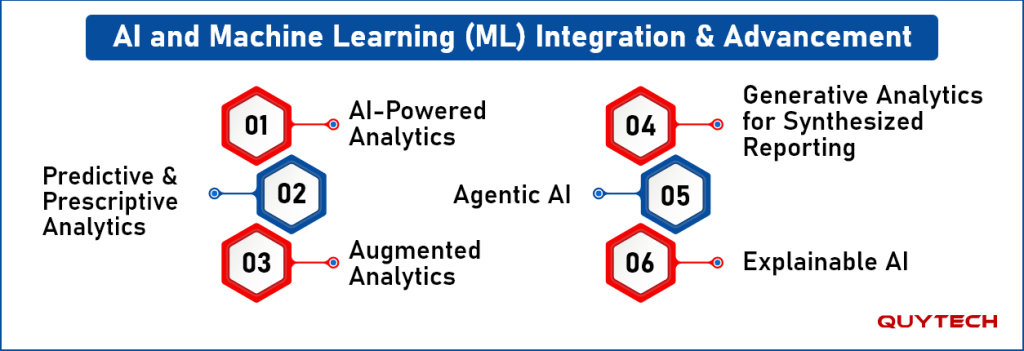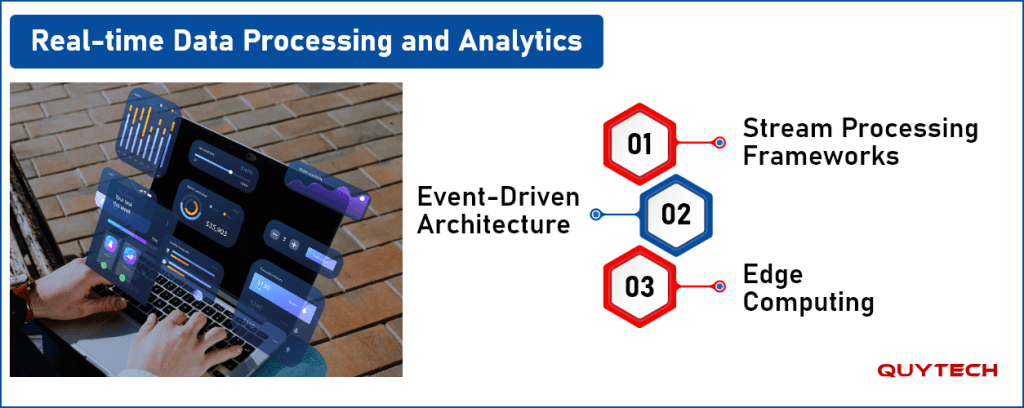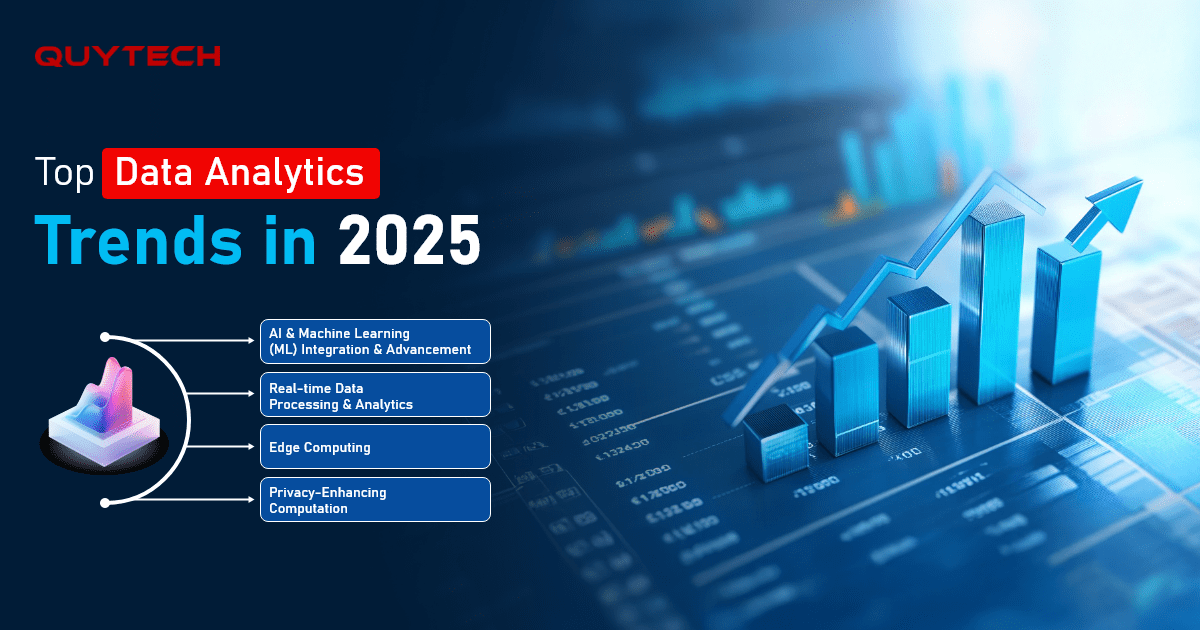The business world is no longer dependent on gut-feeling-driven decision-making; it is transforming rapidly. Every minor to major activity is being performed smartly, effectively, and efficiently, thanks to the use of data analytics. With data-backed insights and decision-making processes, businesses report a 63% increase in their productivity. That makes analytics a powerful tool for business growth.
A recent report by Wavestone North America highlights that 3 in 5 organizations utilize data analytics to drive business innovation. In response, data analytics itself is evolving and shaping new trends to lead modern decision-making.
Wondering about the top data analytics trends that you need to keep a tab on to stay competitive and amplify business growth? Read this blog on the top data analytics trends in 2026 and find the answers to your curiosities.
How Data Analytics is Reshaping Industries in 2026
The rapid and impactful transformation brought in by data analytics is known to all. The way every task that was carried out by intuition and experience has changed to data-driven decisions reveals the place data analytics holds in today’s time.
From refining the target audience to understanding them better, analytics does it all. No wonder entertainment industry leaders like Netflix leverage data analytics to save about a billion dollars annually.
Marking its presence in every industry and domain, the following are some transitions that it drives:
- Data analytics has made the decision-making process more effective by processing business data to extract useful insights. Gut feelings and experience no longer decide the upcoming decision approaches.
- Along with focusing on developing the business, it helps in redefining the ways a business caters to its audience. Customer-centric approaches, when blended with data analytics, help businesses enhance user experience.
- Data analytics helps businesses identify underperforming areas and improve them by optimizing and automating processes.
- With the help of predictive analytics, businesses can predict possible future outcomes and enhance preparedness for the same.
- Utilizing analytics with historical data helps businesses identify data trends and patterns. This helps in making product decisions based on the insights from the data for better market hold.
Emerging Data Analytics Trends in 2026
Now that you have an idea about how data analytics helps businesses, read this section and familiarize yourself with the emerging data analytics trends:
- AI and Machine Learning (ML) Integration & Advancement
When Artificial Intelligence and Machine Learning are integrated with data analytics, they go beyond intelligence. They bring the change by identifying patterns, automating repetitive tasks, and forecasting future outcomes.

- AI-Powered Analytics
It helps in automatically detecting patterns, anomalies, or trends without needing human assistance. It highlights areas that need improvement or attention and interprets them less technically.
- Predictive and Prescriptive Analytics
Predictive analytics highlights possible future outcomes by analyzing existing and ongoing data patterns. It helps businesses in forecasting future possibilities to reduce the chances of surprises. Prescriptive analytics goes a step beyond and gives suggestions based on possible outcomes. This helps businesses take proactive actions.
- Augmented Analytics
Augmented analytics helps non-technical personnel work with data easily without depending on data experts. It cleans the data, derives insights, and presents them on dashboards, making data accessible to non-tech staff.
- Generative Analytics for Synthesized Reporting
Generative analytics goes a step further in interpreting data reports. It explains the patterns, insights, and trends derived from the data in text. For example, sales increased by 30% due to seasonal demand.
- Agentic AI
Agentic AI acts like an assistant. It handles everything from gathering data to triggering actions like updating the records. Agentic AI completes the whole task from beginning to end based on the commands given to it.
- Explainable AI
As the name suggests, Explainable AI(XAI) explains the working of the AI to its user. It provides the reasons for the actions of the AI to help the user understand why the AI took certain actions. This provides transparency, builds trust, and helps in catching mistakes.
- Real-time Data Processing and Analytics
Real-time data analytics is the talk of the town. Its immediate-action approach is what makes it stand out. It analyzes the data in real-time and helps businesses react proactively.

- Stream Processing Frameworks
Stream processing frameworks analyze the data as it flows; it does not need the data to be stored to analyze it. It utilizes technologies like Apache Flink or Apache Kafka to do so.
- Event-Driven Architecture
An event-driven architecture works by reacting instantly when the event occurs. This system does not wait for a full batch to analyze the events; it reacts as soon as they take place.
- Edge Computing
The emerging data analytics trend of edge computing is worth its hype. Edge computing analyzes the data near where it is produced. This reduces the chances of compromising data privacy and speeds up the analysis. Edge computing reduces latency as the data is not sent to the centralized server for analysis. Another advantage of edge computing is that it reduces the amount of data sent to the cloud as it analyzes it at the stage where it is produced, so it forwards only useful data.
- Privacy-Enhancing Computation
A very prominent data analytics trend in 2026 is privacy-enhancing computation. PEC refers to a smart technique of analyzing data without actually exposing the original data. In this method, regulations like GDPR and HIPAA are complied with, maintaining privacy for users’ data. PEC uses the following methods to do so:

- Federated Learning
In this method, the models are trained across different devices without using the actual user data. This method is utilized in privacy-sensitive areas where data security is crucial.
- Homomorphic Encryption
In the homomorphic encryption method, the data is encrypted, which you may feel would require decryption to conduct analysis. But that’s not the case; homomorphic encryption does not require the original data to be decrypted for conducting analysis. This not only does the job, but also maintains data integrity.
- Differential Privacy
The differential privacy method introduces some ‘noise’ into the user data to ensure that tracing it does not invade the users’ privacy. While it may sound tricky and feel inaccurate, the analysis conducted using this method maintains accuracy as well as privacy.
- Sustainability and ESG Data Analytics
Listing the trends in data analytics is incomplete without the sustainability and ESG analytics. With rising awareness about environmental protection and sustainability, businesses are now expected to comply with ESG regulations.
Environmental, Social, and Governance(ESG) data analytics helps companies in tracking their carbon emission, waste generation, energy consumption, etc. It helps them in identifying the areas for improvement and generating reports based on that. This initiative helps companies contribute to society and the environment.
- Cloud Native and Multi-Cloud Analytics
Another rising trend is the switch from on-premise systems to cloud platforms. In this trend, the data is stored on cloud platforms. Cloud platforms can be accessed from anywhere and are scalable and cost-efficient.

- Serverless Data Processing
With serverless data processing, businesses do not have to worry about managing the hardware. It is done by the server providers like Google Cloud, AWS, etc. It is a faster and more secure platform for managing data.
- Multi-Cloud Flexibility
Multi-cloud flexibility gives companies the option to get cloud services from multiple providers. This allows them to avail of different benefits from different cloud service providers.
- Data Fabric Architecture
Data fabric architecture provides a unified layer that connects all the data from different sources to provide a unified view of it. This is used by businesses to get a complete view of their data in one place instead of going through different sources.

- Unified Access Layer
The unified access layer provides a single interface that enables businesses to access their data easily without searching through different storage platforms. It makes data accessibility easy and faster.
- Metadata Integration
Data fabric utilizes metadata, which helps in knowing the source, type, and context of data from a description. It provides efficiency in locating the right data, from the right source, with ease.
- DaaS and Data Monetization
In Data as a Service (DaaS), companies sell their data through online tools and platforms. While it may look unsafe, it is a way of selling data safely without revealing any confidential information.

- Monetizing Internal Data
Companies use their data in a ready-to-use format for other companies’ partners as a service. They monetize their already collected and utilized data by selling instead of simply storing it.
- APIs for Data Delivery
An application programming interface(API) works by sharing data from one application to another without requiring the download of heavy files. It shares data in real-time, making the sharing process quicker and easier.
- Causal AI Interference
Another revolutionary data analytics trend is ‘Causal AI’. As the name suggests, causal AI works by identifying the reason behind a certain event. While it may seem very basic, causal AI does not merely highlight the reason. It works on the accuracy of the reason by ensuring that the event is not affected by cause-and-effect relationships. This helps businesses in viewing a problem from a broader perspective instead of making decisions based on vague reasons.
- Natural Language Generation
Natural language generation is a type of AI that utilizes data and represents it in an easy format. It can make reports from the data, which makes it accessible to non-tech staff as well. Natural language generation turns raw data into human-readable reports.
- Narrative Reports from Dashboards
NLG utilizes narrative reports to represent the data trends, patterns, and insights in a written format on dashboards. This makes accessing and understanding the outcomes a breeze for everyone.
- Voice-Activated Analytics
Voice-activated analytics goes a step further and utilizes voice assistants. It makes the process more advanced. It allows the user to access the reports by verbally communicating with the voice assistant, making the process user-friendly.
- Data Mesh
Another striking data trend in 2026 is the introduction of ‘Data Mesh’. Data mesh allows different teams and departments to manage their data by themselves, establishing accountability. It eliminates the need for a centralized data management system for the whole organization. With the help of data mesh, departments can access their data comparatively faster.

- Domain-Driven Ownership
Domain-driven ownership enables department-wise data ownership. This means that marketing departments can store, retrieve, and manage their data, reducing bottlenecks and providing better control.
- Self-Service Access
To enable seamless sharing of data across the departments, data mesh utilizes APIs. This enables secure sharing of data without compromising on time and quality.
- Data Governance, Privacy, and Ethics
The significance of data governance is highlighted by a report of Humans of Data that states that data governance is the top priority for 3 in 5 data leaders. Businesses utilize data for analysis and decision-making, but their responsibility for that data does not end there.
Data governance ensures that every business utilizing data analytics follows certain data safety and security regulations.

- Ethical AI Use
Ethical AI use ensures that companies utilize artificial intelligence responsibly and ethically. It should not be used with bias and should treat everyone with fairness and transparency.
- Regulatory Compliance
Companies that use AI in data analytics or in any operations should comply with regulations regarding data privacy and security. This ensures that the data is collected and maintained.
Conclusion
The transition brought in by data analytics trends is no doubt changing business approaches from reactive to proactive. The emerging data analytics trends of 2026 are not only transforming the way businesses operate but are also a means for businesses to gain a competitive advantage. From AI integration and sustainability analytics to causal AI and natural language generation, all these trends are a wave of evolution, enhancing the field of data analytics.
For businesses striving to grow to their full potential, emerging data analytics trends are the solution. While it may look complex with the advancements, these data analytics trends can be implemented with ease with the right partners. By blending data analytics trends and ethical practices, you’re not just keeping up with change, you’re leading it.
FAQS
Data analytics’ versatility makes it beneficial for every industry, be it manufacturing or healthcare. Its adoption enables businesses to make better decisions and enhances their efficiency.
No, businesses that do not have a data team can still adopt analytics trends by partnering with a reliable AI and data analytics company. You can also hire developers and data engineers to implement analytics in your business.
Yes, small businesses can immensely benefit from using data analytics trends, as they can help in improving decision-making processes and achieve a competitive edge.
Some common challenges that businesses face are a lack of technical expertise, traditional tools, outdated techniques, scattered data, and unethical use of tools.



